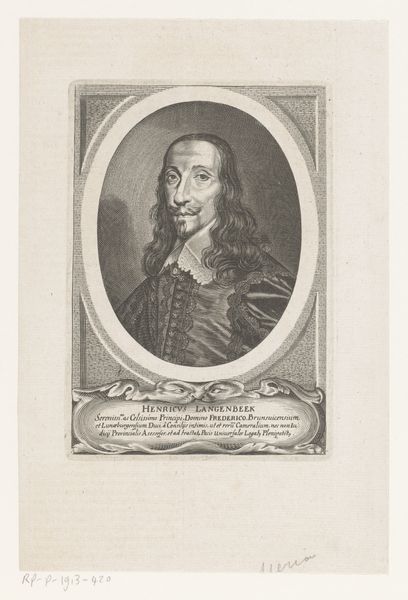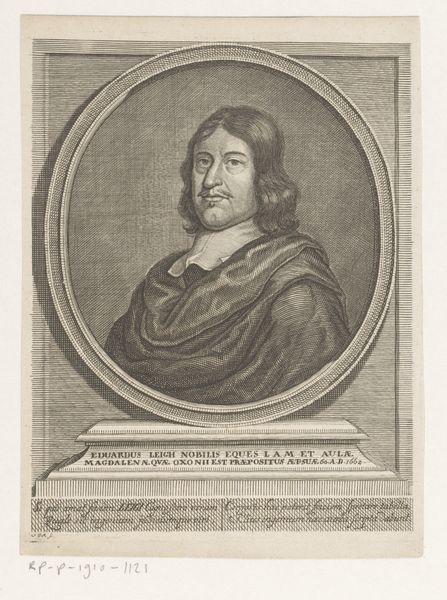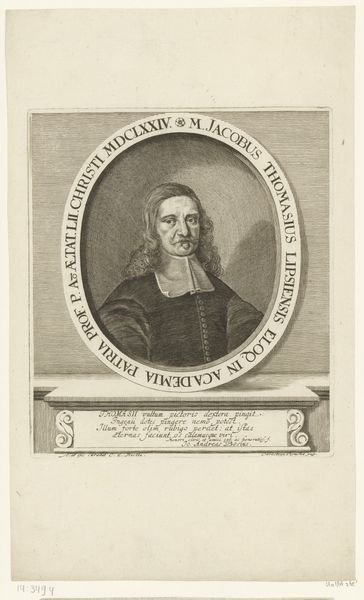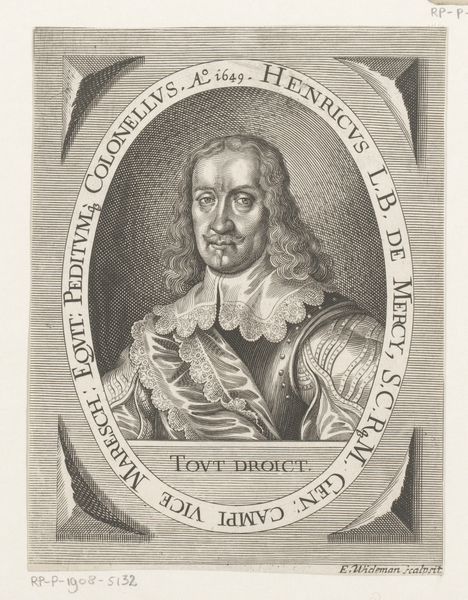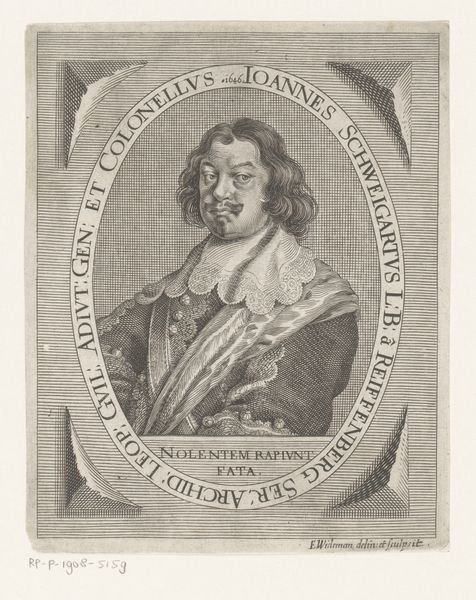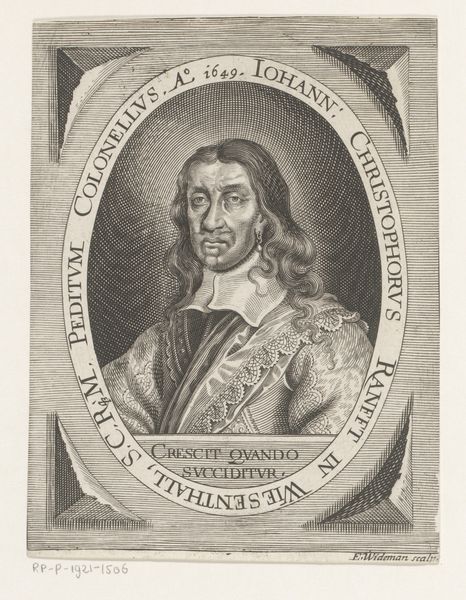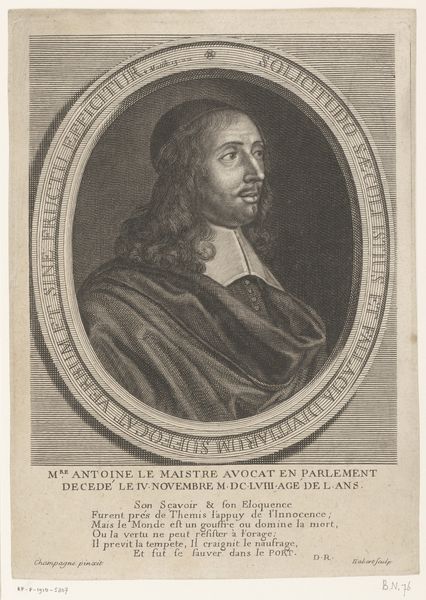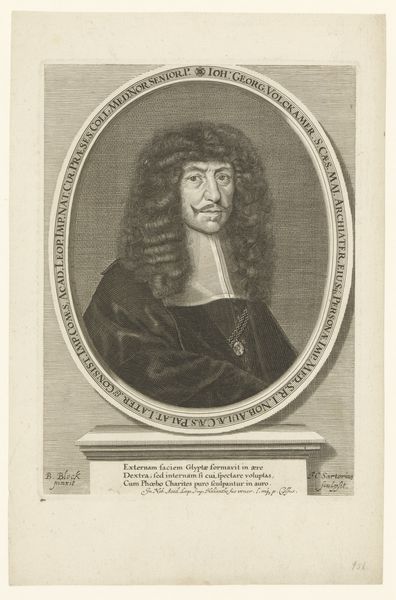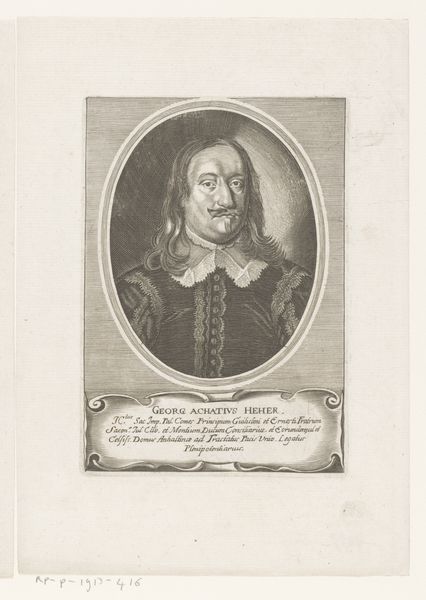
print, engraving
#
portrait
#
pencil drawn
#
baroque
# print
#
caricature
#
figuration
#
pencil drawing
#
line
#
portrait drawing
#
history-painting
#
engraving
Dimensions: height 145 mm, width 114 mm
Copyright: Rijks Museum: Open Domain
This engraving, created in 1649 by Elias Widemann, depicts Felix de Zúñiga y Guzmán, a military figure. Encircling his portrait are inscriptions detailing his titles and a motto: "Ovi Bien Vive Bien Muere" - "He who lives well, dies well." Consider the oval frame. Throughout history, the oval has symbolized both the cosmos and containment, an egg as the origin of life. The face within, meticulously rendered, invites a deep, perhaps unsettling, scrutiny. It evokes similar portraiture across time. Yet, the act of framing, whether in ancient Roman cameos or Renaissance paintings, reveals a desire to capture and immortalize, to freeze a fleeting moment. The stoic expression, the formal attire—these are not merely representations but assertions of power and status. Such symbolism resurfaces repeatedly, echoing through time. The psychological weight of this image lies in its ability to evoke the past, inviting us to contemplate the ever-shifting dance between mortality and legacy, memory and symbol.
Comments
No comments
Be the first to comment and join the conversation on the ultimate creative platform.
